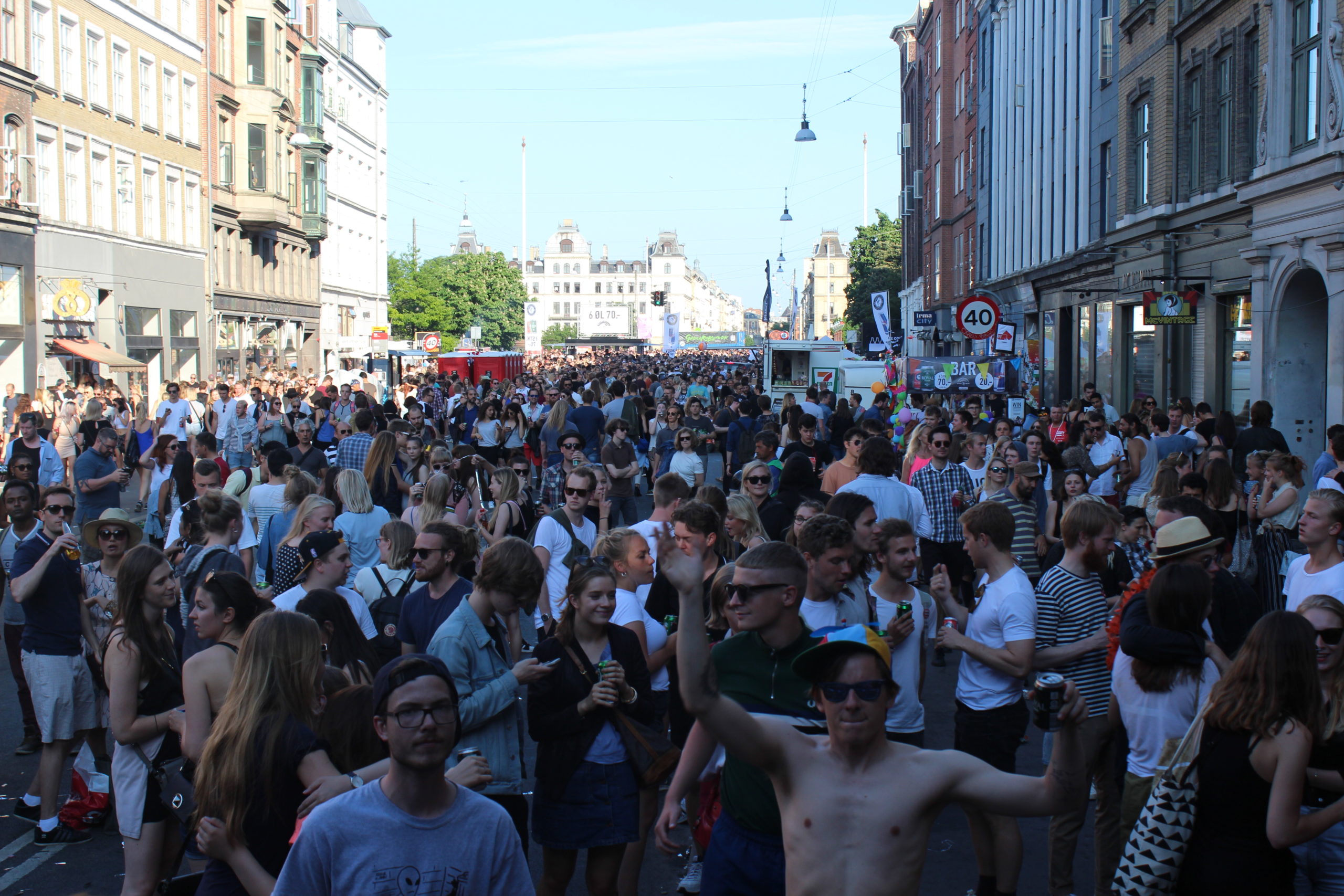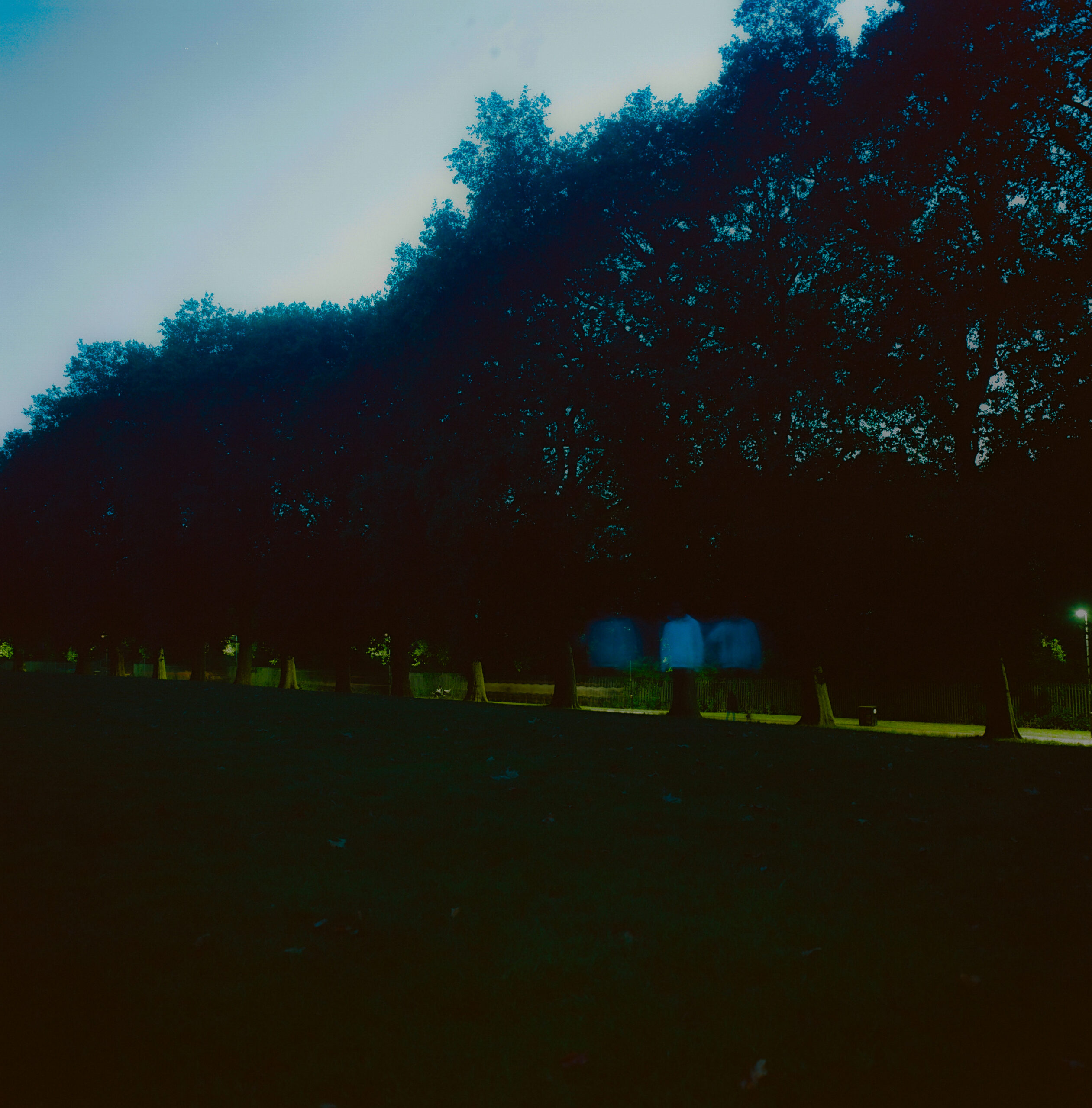Review: Distortion Festival 2016

After my first wintry visit to Copenhagen in November last year, I was persistently advised to return in the summer by various unnamed sources. What for? The warm weather? No, there’s no guarantee of that. The reason to return to the Danish capital for the first weekend of June is the city’s beloved annual knees-up: Distortion Festival.

As I retraced the familiar super-convenient metro that takes you from airport to city centre in less than 30 minutes, I thought to myself: “If I were a DJ I’d prefer to take the metro, it’s that easy, than an Uber. Alas no, I’m just a joke of a journalist”. But then I couldn’t help myself eavesdropping on a conversation between two girls on the same train as me. One’s from Sweden. The other from the Isle of Skye. That’s the ‘largest and most northerly major island in the Inner Hebrides of Scotland’, according to Wikipedia… in other words, a rather remote and random part of the world. And, yes, they were both going to Distortion.

I arrived at lunchtime on Wednesday, just in time for the first of two warm-up street parties that led up to the festival proper. Attracting an estimated 100,000 people a day, the Distortion formula is simple, yet oh so effective. Two days of street raving followed by two days of nocturnal partying. In theory you should be able to recover on the Friday. In realistic festival terms, however, such planning often gives way to spontaneity and getting sidetracked becomes the norm. On resurfacing from the metro I was met by blissful 25-degree sunshine that was to last the whole festival, the offer of lukewarm beer and a burgeoning buzz in the air. My cans of Tuborg were turgid, and I was ready to grab my first taste of the organised chaos.

We plunged straight into the heartland of Nørrebro – the neighbourhood where the first street party took place. The festival programme showed over 40 different makeshift soundsystems and stages scattered across the area, each expressing their own music tastes.

Musically it creates a melting pot of sounds, meaning there’s something for everyone. From strictly African sets and Brazilian baile funk sounds, to chilled-out cosmic jazz, it’s like the city has been given a free pass to do whatever it wants. Meanwhile, pop-up stands serving cocktails and six-packs of beer kept the crowd lubricated.

There aren’t any headliners at the street parties, so it’s an opportunity for local DJs to show what they’re all about. In fact, anyone can set up a party; you don’t need to be a superstar, you just have to plan it in advance with the organisers. And it’s a team effort – the festival has to reach a target of 10,000 supporters to crowd fund the street parties for the following year, which it successfully managed.
 Day two of street partying took us to Vesterbro on the other side of town and I’m told each year is a competition between the two rival neighbourhoods. But perhaps they’re both winners in that they’re both shining examples of how to throw a street party. Old town squares are taken over by huge speaker stacks hanging from mini cranes, yet the atmosphere remains tempered and under control.
Day two of street partying took us to Vesterbro on the other side of town and I’m told each year is a competition between the two rival neighbourhoods. But perhaps they’re both winners in that they’re both shining examples of how to throw a street party. Old town squares are taken over by huge speaker stacks hanging from mini cranes, yet the atmosphere remains tempered and under control.

Civilised hedonism might be the greatest oxymoron I ever write, but it could also be the truest. Despite all the booze, topless lads and risk of heat stroke, there was no trouble – not like what we’re witnessing at Euro 2016, or what we’re used to at, say, Notting Hill Carnival – or any need for a heavy police presence. Frankly, it’s hard to see any of this being possible in the UK. Not even Skepta could shut down London on this scale.

There were scheduled club nights for Wednesday and Thursday, most notably sets from Steffi, Blawan and Roman Flugel, while Wiley and Slimzee represented grime for the UK. But remember what I said about spontaneity? Well, we ended up in a dark and dingy club called KB18 – the perfect breeding ground for techno – in Copenhagen’s now infamous meatpacking district. I had no idea who was playing until I recognised Subb-an behind the decks. His set was clinical, marked by sharp-shooting techno and the inexorable beat of the drum rolling towards the furthest reaches of another world. Soon the tribe was whittled down to the most steadfast nucleus of dancers, all glancing over one’s shoulder to see smirking faces of satisfaction.
 The main festival site was located in Refshaleøen, a former industrial shipping yard jutting out on the north-west peninsula of the city. A huge concrete pontoon, the location reminded me of London Pleasure Gardens and the surrounding Docklands area in London, where the ill-fated Bloc Festival got shut down in 2012. No such tragedy here, though.
The main festival site was located in Refshaleøen, a former industrial shipping yard jutting out on the north-west peninsula of the city. A huge concrete pontoon, the location reminded me of London Pleasure Gardens and the surrounding Docklands area in London, where the ill-fated Bloc Festival got shut down in 2012. No such tragedy here, though.
 Spread across nine stages of varying sizes and forms, the standout appearances included Tiga, Mano Le Tough and Helena Hauff, one after the other at the Royal Container Area, an enclosure made of highly reverberating shipping containers. Ata Kak, the Ghanaian star whose recent resurgence to fame saw him play Field Day, was due to make his Denmark debut in one of the more leftfield bookings. Elsewhere, there was music to satisfy all tastes including a marquee set of dancehall and reggae from David Rodigan, while the Tekno Tunnel provided a sure-fire fix for those seeking something a little faster. Soul, hip-hop, hard trance and techno were all catered for as well.
Spread across nine stages of varying sizes and forms, the standout appearances included Tiga, Mano Le Tough and Helena Hauff, one after the other at the Royal Container Area, an enclosure made of highly reverberating shipping containers. Ata Kak, the Ghanaian star whose recent resurgence to fame saw him play Field Day, was due to make his Denmark debut in one of the more leftfield bookings. Elsewhere, there was music to satisfy all tastes including a marquee set of dancehall and reggae from David Rodigan, while the Tekno Tunnel provided a sure-fire fix for those seeking something a little faster. Soul, hip-hop, hard trance and techno were all catered for as well.
 Fast-forward to Saturday and we started the night off hearing Empress Of and her live band play to a subdued, but engaged crowd. Master Fatman played some lovely sounds from Africa close the harbour edge, before we took the free shuttle boat (because we could) across the waterfront to the Langelinie Pavillonen, a kind of hotel establishment on the water’s edge just round the corner from the iconic Little Mermaid statue. There we were met by local DJ duo Carlo and Selma, who despite technical difficulties played a great vinyl set featuring ‘Where’s Jason’s K’ by Syclops and a surprise play of Armand Van Helden’s remix of Tori Amos ‘Professional Widow’. It turned out to be a lovely trip across the water.
Fast-forward to Saturday and we started the night off hearing Empress Of and her live band play to a subdued, but engaged crowd. Master Fatman played some lovely sounds from Africa close the harbour edge, before we took the free shuttle boat (because we could) across the waterfront to the Langelinie Pavillonen, a kind of hotel establishment on the water’s edge just round the corner from the iconic Little Mermaid statue. There we were met by local DJ duo Carlo and Selma, who despite technical difficulties played a great vinyl set featuring ‘Where’s Jason’s K’ by Syclops and a surprise play of Armand Van Helden’s remix of Tori Amos ‘Professional Widow’. It turned out to be a lovely trip across the water.
 We returned to the shores of the main site in time to catch MK, whose set tried too hard when everything about it was predictable. I was looking forward to his old-school 90s house, but it seemed he felt pressured into playing a more modern sterile strain of music. Dixon was booked in for a three-hour set on the main stage to close the whole festival. A tall order for most, but one which the German DJ duly accepted. It was my first time seeing Dixon, and he certainly lived up to the hype of recent years, showcasing calm precision throughout his mix and finishing, in what was a triumphant move, with SBTRKT’s ‘Hold On’. Sampha’s vocals never sounded sweeter on the engulfing soundsystem, bringing the curtain down on Distortion 2016 in emotional fashion.
We returned to the shores of the main site in time to catch MK, whose set tried too hard when everything about it was predictable. I was looking forward to his old-school 90s house, but it seemed he felt pressured into playing a more modern sterile strain of music. Dixon was booked in for a three-hour set on the main stage to close the whole festival. A tall order for most, but one which the German DJ duly accepted. It was my first time seeing Dixon, and he certainly lived up to the hype of recent years, showcasing calm precision throughout his mix and finishing, in what was a triumphant move, with SBTRKT’s ‘Hold On’. Sampha’s vocals never sounded sweeter on the engulfing soundsystem, bringing the curtain down on Distortion 2016 in emotional fashion.

The last ones standing were left baying for more. And the organisers were ready, too. As thousands of revellers poured out of the festival site, preparations were already underway for the after-party in the forest next door. At this point, I’m pretty sure no one went home. Instead, the crowd gravitated as one immense synchronised mass towards the mobile speaker truck in the un-cordoned open-air shrubland. In one final festival flourish, Barnt went back-to-back with Superpitcher feeding the insatiable appetite of bodies baking in the rising sun. It formed a true tableau of dancers, reluctant to stop for fear of missing out, basking in the collective energy that kept everyone going. And it’s that not-fully-legal sensation, invoked by moments like these, that make Distortion really standout.




















![2354_WALLET_FOR_VINYL_313X313_SPINE_3MM [Convertido]](https://www.theransomnote.com/wp-content/uploads/2024/04/SLEEVE-FRV046-copia.jpg)


